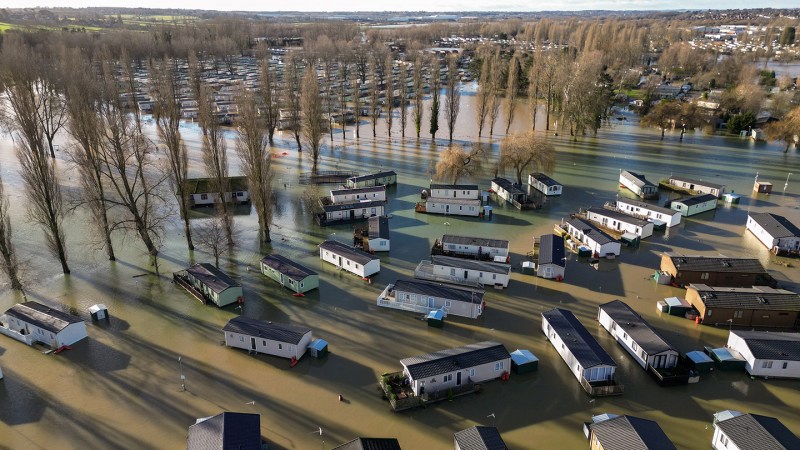
Take our AI survey
Scientific news has partnered with Trusting News to gather feedback on the potential use of AI in journalism. Currently, we do not publish any content produced by generative AI (see our policy). We want to hear your views on how Scientific news can use AI responsibly. Tell us by taking a short 10-question survey.
The book provides a comprehensively reported primer on the world’s water problems and dives into possible solutions, including agricultural remedies, policy changes, technological innovations, and home solutions like rainwater harvesting.
“The world is not running out of water – people are,” writes Smedley. He travels to Hoover Dam in the American Southwest to see the low water levels in Lake Mead (SN: 18.5.23). He tours the Middle East, stopping by Jordan’s Karameh Dam, where the impounded water has become too salty for irrigation. Closer to home, he visits Europe’s largest man-made lake, northern England’s Kielder Water, which was built in the late 1970s in anticipation of a demand for water that petered out within about a decade of completion. It is the southern half of the country that has become water stressed.
Such megaprojects highlight how “water crises are usually caused by excessive human mismanagement, not climate,” writes Smedley. But climate change is certainly making things worse, he adds: “As climate change bites, rainfall patterns change.” For example, the warmer atmosphere holds more water vapor, a greenhouse gas that exacerbates warming and fuels the massive storms that cause devastating floods.
Flooding can make water pollution worse. Runoff from storms carries additional nitrogen and phosphorus from farms. A “poonam” of organic manure of livestock origin, which contains these elements, contaminates the fresh water supply, as does manure (SN: 14.9.21). Some agrochemicals, Smedley writes, have been linked to increased cases of pediatric cancer.
Changes in agricultural practices, just some of the solutions Smedley explores, could mitigate pollution, water scarcity and potential flooding immediately. No-till farming results in root systems, webs of fungi and burrowing insects that maintain a spongy soil that absorbs water. Because they hold more water, these fields can better withstand dry periods. Their soil structure helps them resist erosion, minimizing runoff (SN: 4/12/22). They also need much less fertilizer because fungi and other microbes, along with cover crops planted between growing seasons, store and return nutrients to the soil. England’s water woes – shortages are a problem despite a reputation for heavy rainfall – can only be solved through no-ball farming, Smedley’s report finds.
As for the buried underwear, after a couple of months, Smedley and the farmer discovered dusty, holey pants from the organic field, while the conventional farm produced dirty but wearable ones. The uncultivated field, unplowed for decades, resulted in a “messy mess” of soil, fungal debris and purple patches, along with a millipede that jumped out of the debris and scurried away.
Smedley fills his book with sometimes funny, often serious insights that people can apply to their lives. Most of people’s “water footprint” in the Western world, for example, comes not from the tap water used for washing, cooking and cleaning, but from the water that goes into making the products we consume. Depending on the place and method of growth, and the specifics of the calculations, throwing a fried avocado can use 273 liters of water. A single steak can cost 2,000 litres. “If you’re wearing a T-shirt made from cotton grown in Egypt,” writes Smedley, “in a sense, you’re wearing water from Egypt.”
Given all the water we waste, Smedley notes, small changes can make a big difference. “‘Last drop’ doesn’t mean waiting for the water to run out,” he explains. “It means cherishing every last drop.”
BUY Last point from Bookshop.org. Scientific news is an affiliate of Bookshop.org and will earn a commission on purchases made from links in this article.
#world #water #problems #book #solutions
Image Source : www.sciencenews.org
